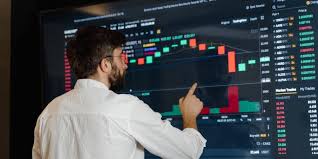
Trading Futures Crypto: A Comprehensive Guide
In the exciting world of financial trading, the emergence of cryptocurrencies has created a new landscape that traders must navigate. Trading Futures Crypto http://recursosanimador.com/scripts/librovisitas2.php?pagina=5936 Trading futures crypto has become increasingly popular, as it allows traders to leverage their positions and manage risks. This article explores the various aspects of trading futures in the cryptocurrency market, including strategies, risks, and market dynamics.
Understanding Futures Trading
Futures trading involves entering contracts to buy or sell an asset at a predetermined price at a specified time in the future. In the context of crypto, this means trading contracts based on the future price of cryptocurrencies like Bitcoin, Ethereum, and others. The key benefit of futures trading is the ability to trade on margin, which amplifies both potential profits and losses.
The Rise of Crypto Futures
The introduction of crypto futures has revolutionized the way traders interact with the cryptocurrency markets. Established exchanges like the Chicago Mercantile Exchange (CME) and Binance Futures offer regulated environments for futures trading, attracting institutional and retail investors alike. The Bitcoin futures market, for instance, provides insights into market sentiment and can influence the underlying asset’s price.
Regulatory Landscape
One of the most critical factors influencing trading futures crypto is regulation. The regulatory framework governing futures contracts can vary significantly by region. Traders must stay informed about the laws and regulations in their jurisdictions to avoid potential legal pitfalls. Major regulators, such as the Commodity Futures Trading Commission (CFTC) in the United States, play an essential role in overseeing futures trading activities.
Key Strategies for Trading Futures Crypto
Successfully trading futures in the cryptocurrency market requires a solid understanding of various strategies. Here are some popular approaches:
1. Hedging
Hedging is a strategy used to mitigate risk by taking an offsetting position in a related asset. For example, if a trader holds a significant amount of Bitcoin and fears a price drop, they might sell Bitcoin futures contracts to protect their investment. This way, if the price of Bitcoin falls, the gains from the futures contract may offset the losses from their holdings.
2. Speculation
Many traders use futures contracts to speculate on the price movement of cryptocurrencies. By analyzing market trends, news, and technical indicators, traders can predict whether the price will rise or fall and place trades accordingly. It’s essential to have a solid grasp of market analysis to execute this strategy effectively.
3. Arbitrage

Arbitrage involves taking advantage of price differences in different markets. For example, if Bitcoin is trading at a lower price on one exchange compared to another, a trader can buy it on the cheaper exchange and sell it on the more expensive one, profiting from the price differential. This strategy requires quick execution and access to multiple trading platforms.
Managing Risks in Futures Trading
Trading futures crypto comes with inherent risks. Here are some tips to manage those risks effectively:
1. Use Stop-Loss Orders
Stop-loss orders are an essential risk management tool that allows traders to set a predetermined price at which their position will automatically close to limit losses. This is particularly important in the volatile crypto market, where prices can fluctuate rapidly.
2. Diversify Your Portfolio
Diversifying investments across different cryptocurrencies and asset classes can reduce overall risk. Traders should not put all their capital into a single asset or strategy but instead create a balanced portfolio that can weather market volatility.
3. Keep Emotions in Check
Trading can evoke strong emotions, particularly when significant sums of money are at stake. Successful traders learn how to manage their emotions, sticking to their strategies and avoiding impulsive decisions driven by fear or greed.
Market Trends and Future Outlook
The cryptocurrency market is highly dynamic, with trends constantly evolving. The future of trading futures crypto looks promising, with increased institutional interest and regulatory clarity potentially driving growth. Innovations in blockchain technology, DeFi (Decentralized Finance), and other areas are also likely to impact trading strategies and market dynamics.
The Role of Technology
Technological advancements have played a crucial role in shaping the futures trading landscape. Algorithmic trading, high-frequency trading, and AI-driven analytics are becoming increasingly common among traders seeking to gain a competitive edge. Investing in the right tools and platforms can greatly improve a trader’s performance.
Conclusion
Trading futures crypto offers exciting opportunities for profit, but it is vital to approach it with caution and thorough preparation. By understanding the fundamental principles, employing effective strategies, and managing risks appropriately, traders can navigate this emerging market successfully. As the cryptocurrency landscape continues to evolve, staying updated on trends and innovations will be crucial for anyone looking to succeed in trading futures crypto.
